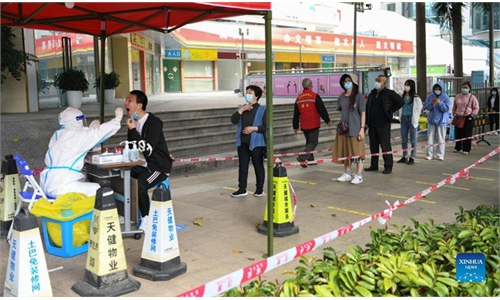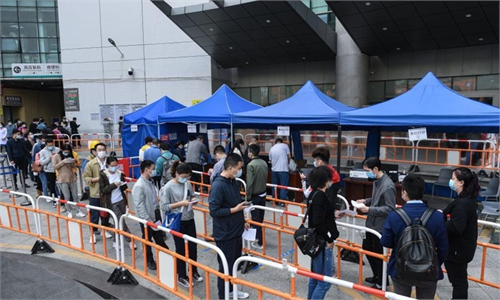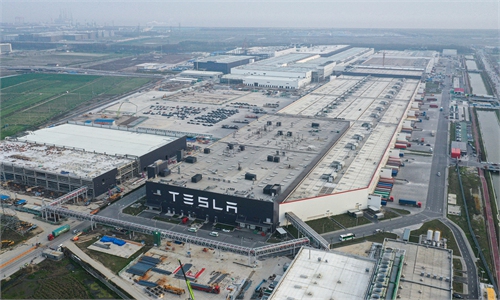GT Investigates: China’s zero-COVID policy, flexible measures ensure minimum impact on supply chains
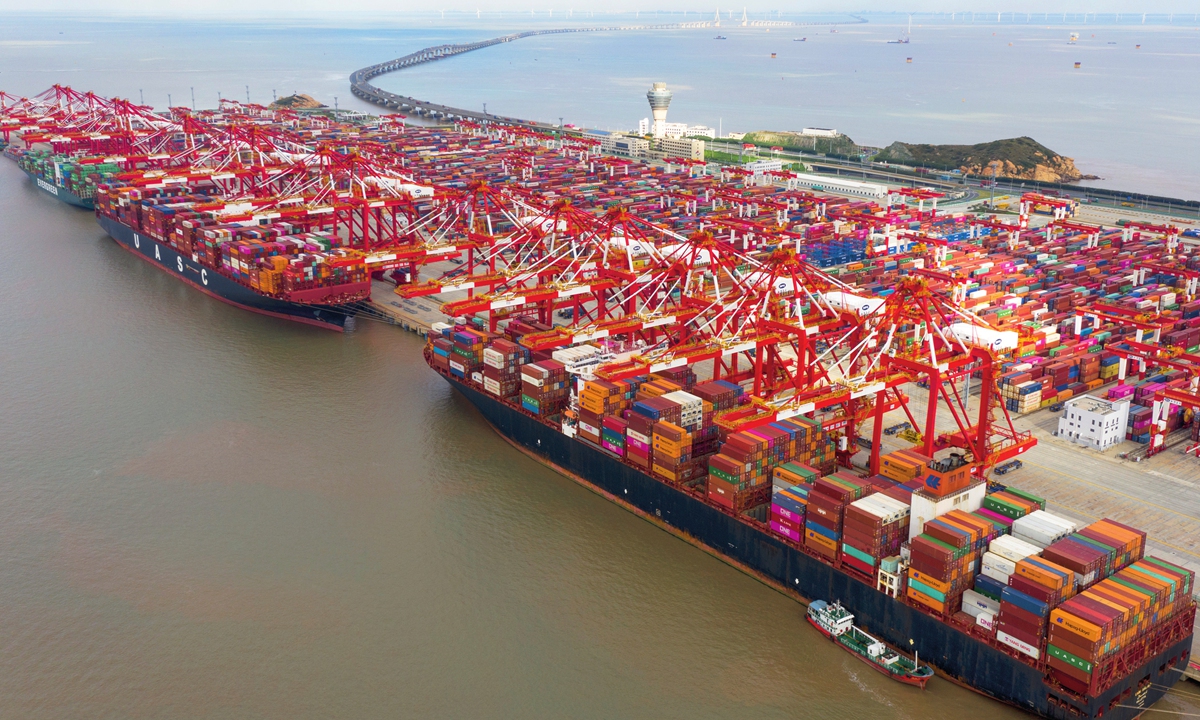
Containers carrying goods for the third China International Import Expo wait at Yangshan port in Shanghai. Photo: cnsphoto
Concerns by some US media outlets over potential supply chain hiccups as a round of Omicron cases hit some of China's major manufacturing and commercial cities are a testament to China's prominence in the global supply chain, analysts and industry insiders said on Friday. While some sectors are inevitably affected during the current fight to contain the virus, the overall health of the supply chain in China remains sound, thanks to the effective dynamic zero-COVID strategy, and as cities swiftly resume production, the impact of this round of epidemic flare-ups will be very limited, they said.
As the "worst outbreaks" in two years caused by the highly contagious Omicron variant hit many of China's manufacturing hubs, US media outlets have rushed to flag supply chain concerns and delay at ports, citing the suspensions of plants run by big companies including Toyota, Volkswagen, Tesla and Apple OEM Foxconn.
However, economists said that what people are seeing this week in China is not comparable to the US, where serious supply chain issues from ports to warehouses are playing a part to fuel record inflation.
The impact of this round of outbreak and epidemic control measures has on China's supply chain is temporary and controllable, and the disruption done to the supply chain is likely to be offset as companies ramp up production, analysts pointed out.
Bai Ming, deputy director of the Chinese Ministry of Commerce's International Market Research Institute, told the Global Times on Friday that as Chinese localities gain more experience in fighting the virus, they tend to achieve swifter results and that recovery also comes sooner.
Such a playbook was unfamiliar to foreigners. They could be surprised by the sudden suspension of plants this week in both the Yangtze River Delta and the Pearl River Delta, which are the center of the global supply chain from electronics products to consumer goods, Bai said.
The latest epidemic forced Shanghai and Shenzhen, the No. 1 and No. 3 Chinese cities in terms of GDP output, to introduce strict measures including remote office work and plant suspensions, while large-scale coronavirus screening tests were carried out.
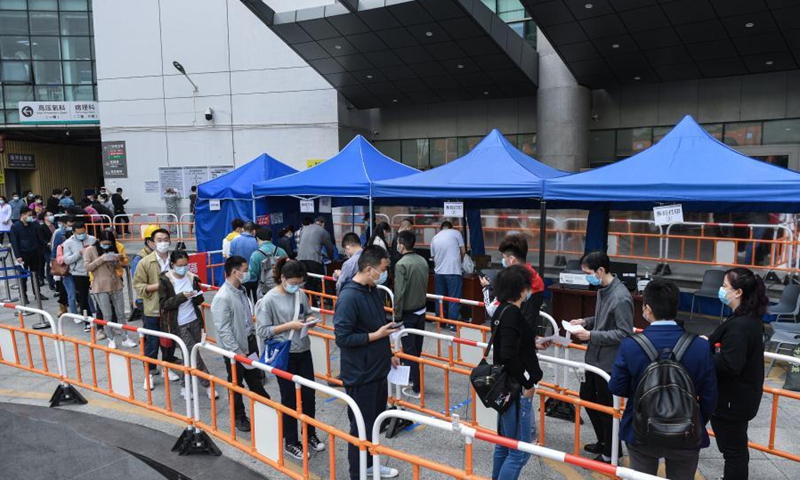
People wait in line for nucleic acid tests at a COVID-19 testing site in Huazhong University of Science and Technology Union Shenzhen Hospital (Nanshan Hospital) in Shenzhen, south China's Guangdong Province, Jan 26, 2021.
Nonetheless, Chinese companies now have rich experiences to cope with the impact of strict anti-epidemic measures, and benefit from the country's overall success in keeping the virus at bay, analysts said.
Companies in Shenzhen are relocating their production equipment and materials to sites unaffected by epidemic control restrictions, tapping backup facilities and relying on closed-loop management at industrial compounds that reduce the chance of infections. The only weak link in the supply chain seems to be in logistics, as the flow of freight remained hampered under the current situation. These measures mean China is not the problem of the global supply chain but the solution to it.
The epidemic since earlier this year has affected the operation of some ports but there are also ports seeing increased throughput as cargoes were redirected. According to data released by the Ministry of Transport, under the impact of epidemic flare-ups and logistics bottlenecks, the container throughput of the Port of Shenzhen declined 10.9 percent year-on-year in January and February while the Port of Guangzhou saw stagnation. Both ports were world-class container terminals.
However, seen from the whole country, the Port of Shanghai, the world's largest container port, actually saw throughput increase by 9.6 percent to 8.16 million containers during the same period. The Port of Ningbo-Zhoushan saw an increase of 1.1 percent.
A manager with Ningbo Zhoushan Port Group told the Global Times on Friday that strict anti-epidemic measures weighed on the efficiency of port operations but the port also came up with targeted measures to mitigate such impacts. In Ningbo-Zhoushan, freight truck drivers were given green passages; the port added six new shipping lines to expand its markets and introduced trains to load containers directly in the port.
"We have solved the issue of port logjam, which was a headache last summer," the manager said.
Contrary to claims that ship delays may stretch to up to 14 days, the ability to handle ships at some Chinese ports is improving with necessary epidemic control measures in place.
"For 2021, the average waiting time of a ship before it can get into the port was 21.8 hours. From January 1 to March 17, that time has been slashed to 17.28 hours."
One factor underpinning the port's strong performance, the manager said, is that factories in the hinterlands of China were not affected by the epidemic, thanks to the country's effective epidemic control policies, and they have been able to send an endless stream of goods to the port for export to overseas market.
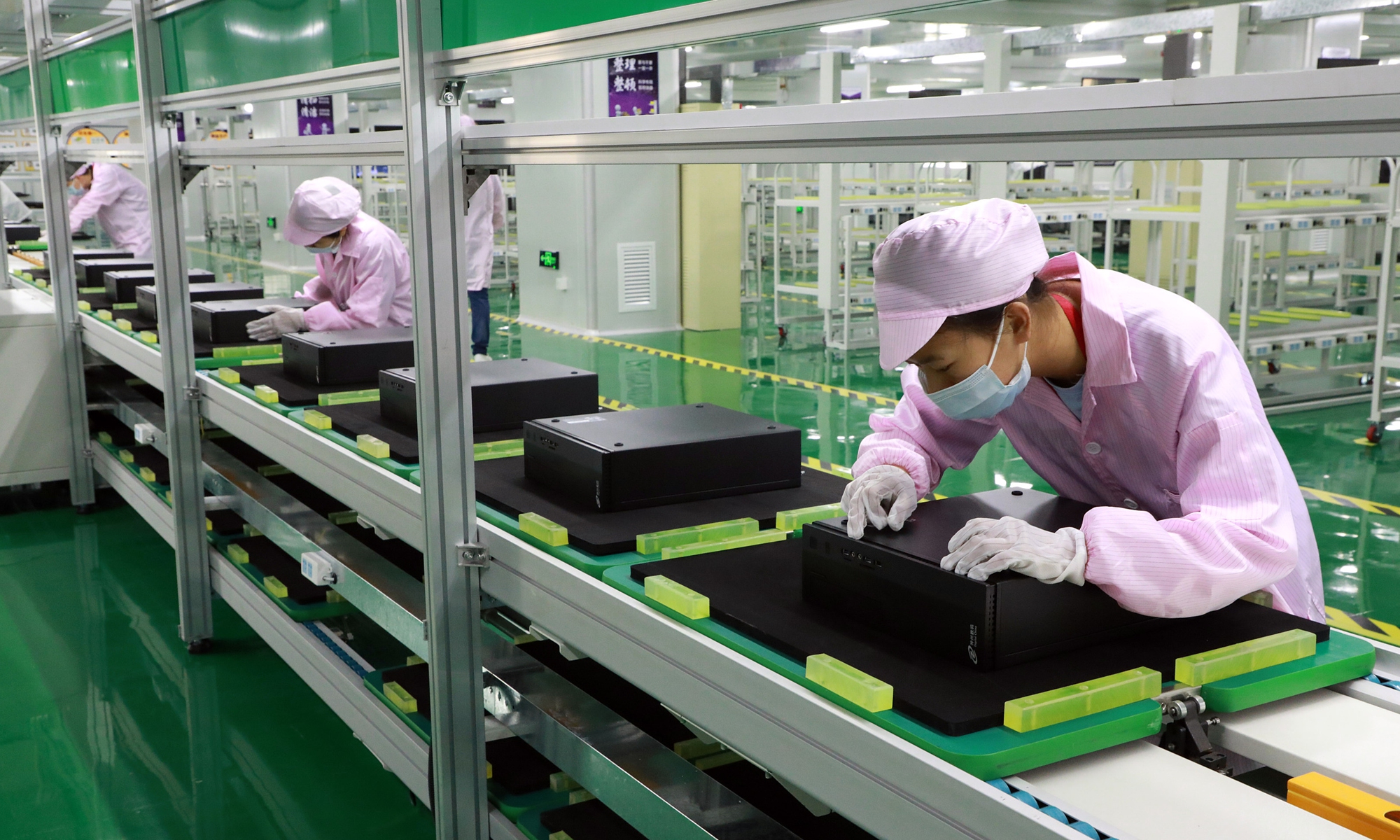
Photo:VCG
In Shanghai and Shenzhen, just as many plants were ordered to stop production, many were also granted a green light to resume operations in a matter of days, proving that the epidemic outbreak is controllable.
Five districts in Shenzhen that have met the requirements of the dynamic zero-COVID policy have resumed normal work and life starting Friday with buses and subway services returning to normal.
A manager with a world-leading consumer electronics maker confirmed with the Global Times that the company has received notices from the local government allowing its employees to return to the office on vital errands in Nanshan district, even as the office building would only be officially cleared for reopening on Sunday, showing the government's flexible approach.
In Shanghai, Tesla said its Shanghai Gigafactory, an important production base for the US electric car maker, resumed operations on Friday after production was reportedly halted for two days due to requirements of coronavirus prevention.
Gao Shiwang, a director with the China Chamber of Commerce for Import and Export of Machinery and Electronic Products, said that speaking from experience, if the suspension is only one week, whatever disruption done to the supply chain could be made up by faster production and delivery.
Minimum costs, maximum gain
Chinese President Xi Jinping on Thursday chaired a leadership meeting on fighting COVID-19, in which he stressed science-based and accurate measures and the adherence to the dynamic zero-COVID policy to curb the spread of the epidemic soonest.
More effective measures should be taken to achieve maximum effect in prevention and control with minimum costs, and to reduce the epidemic's impact on socioeconomic development as much as possible, Xi said.
Economists and analysts said the dynamic zero-COVID strategy is still the biggest advantage China has in its COVID-19 battle.
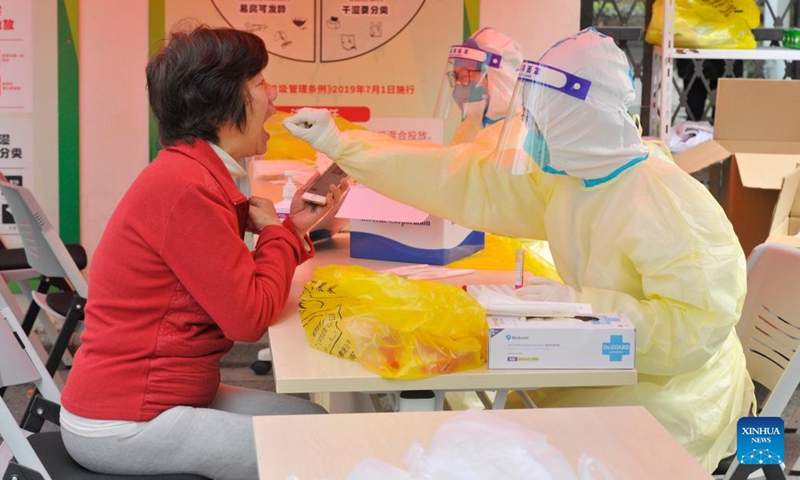
A medical worker takes a swab sample from a resident for nucleic acid test at a community in east China's Shanghai, March 13, 2022.Photo:Xinhua
A National Health Commission official said on Friday that China's epidemic control measures reasonably struck a balance with socioeconomic development. The official said it would be improper to overly attribute economic losses to epidemic control measures due to the complicated relations between the two.
Analysts said pessimism created by Western media, including overseas institutions' rush to downgrade their forecasts of China's economic growth, may come from a lack of a grasp of the epidemic control situation in China.
Morgan Stanley cut its economic growth forecast for China to zero for the current quarter versus the final three months of 2021, while Goldman Sachs cut its 2022 forecast for China's economic growth from 4.8 percent to 4.3 percent.
The Australia and New Zealand Banking Group recently published a report on the economic cost of China's COVID-zero approach, concluding that the policy has a limited impact on the economy because measures are highly localized and targeted, estimating that the economic impact will only be 0.6 percent of annual GDP.

